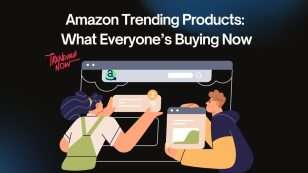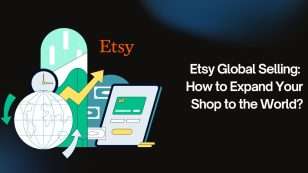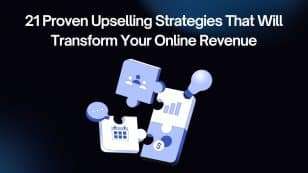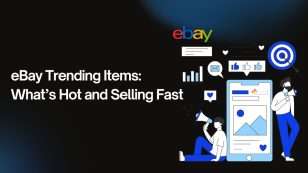Selling on Shopify without inventory is a great way to start an online business with minimal risk and investment. Instead of managing stock, you can leverage various business models that allow you to sell products without upfront costs. Here are some of the most effective methods:
- Print-on-Demand – Sell custom-designed apparel, accessories, and home decor without handling production or shipping.
- Dropshipping – Partner with third-party suppliers who ship products directly to customers on your behalf.
- Selling Digital Products & Services – Offer eBooks, courses, templates, or services that don’t require physical storage.
- Starting an Affiliate Store – Promote products from other brands and earn commissions on each sale.
Market Trends and Insights
The eCommerce landscape is evolving rapidly, with significant growth in dropshipping, print-on-demand, and affiliate marketing. As technology advances, AI-driven solutions and digital commerce continue to reshape online selling strategies. Here’s a look at key market trends shaping Shopify businesses in 2025.
The global dropshipping market is projected to hit $372.47 billion in 2025, with Shopify leading the way due to its user-friendly interface and integration with tools like DSers and Spocket. The print-on-demand industry is also booming, expected to grow by $25.36 billion by 2029 as demand for customized products rises. In affiliate marketing, 79.3% of marketers are using AI-driven content creation, with blogging (79.1%) remaining the top promotional method.
Meanwhile, digital commerce transactions per user are expected to reach $2.23K in 2025, with China dominating the market at $3,482 billion. As AI and mobile-first experiences continue to shape online selling, Shopify store owners should leverage these trends to optimize their business strategies and stay competitive.
6 Business Models to Sell on Shopify Without Inventory
Dropshipping
Dropshipping is a business model where you sell products without holding inventory. Instead of stocking items, you partner with third-party suppliers who fulfill orders on your behalf. This method allows you to focus on marketing and customer service while suppliers handle storage, packaging, and shipping.
To start, you’ll need to find a reliable supplier through platforms like DSers, CJdropshipping, or Spocket. These apps integrate with Shopify, making it easy to list products and automate order fulfillment.
Pros:
- Low-risk model with minimal upfront costs.
- No need to invest in inventory.
- No shipping responsibilities.
Cons:
- Potential shipping delays from overseas suppliers.
- Need to work with multiple suppliers for a diverse product range.
Print-on-Demand (POD)
Print-on-Demand is perfect for entrepreneurs who want to sell custom-designed products like T-shirts, hoodies, mugs, and phone cases. Instead of buying inventory in bulk, you upload designs to a POD platform such as Printify, Printful, or Teespring, and they handle printing, packaging, and shipping for each order.
This model is ideal for creative entrepreneurs, influencers, and niche businesses that want to monetize unique designs without upfront costs.
Pros:
- No upfront printing or inventory costs.
- Low financial risk since products are made only after a sale.
Cons:
- Limited control over production quality.
- Shipping times depend on the POD provider and location.
Affiliate Marketing
Affiliate marketing is a simple and cost-effective way to monetize your Shopify store without managing inventory. Instead of selling your own products, you promote third-party products and earn a commission for each successful sale made through your affiliate links.
To get started, you need to partner with brands or affiliate networks that align with your niche. Popular options include Amazon Associates, ShareASale, CJ Affiliate, and Impact. Once approved, you can embed affiliate links or banners on your Shopify store, blog, or social media platforms.
The key to success in affiliate marketing is choosing the right products and creating valuable content around them. For example, if your store is in the fitness niche, you can write detailed product reviews on workout gear, supplements, or fitness courses while including affiliate links for purchases.
Pros:
- No need to invest in or manage inventory.
- Passive income potential with the right audience and content strategy.
- Minimal time commitment compared to traditional eCommerce.
Cons:
- No control over product pricing, availability, or shipping.
- Earnings depend on commission rates and your ability to drive traffic and conversions.
- Some affiliate programs have strict approval processes.
Creating a Marketplace
Another way to sell on Shopify without holding inventory is by turning your store into a multi-vendor marketplace. Instead of selling your own products, you allow other sellers to list and sell their items on your platform while earning a commission from each transaction.
To set up a marketplace, you’ll need a Shopify marketplace app like MultiVendor Marketplace by Webkul, Dokan, or Marketplace in a Box. These apps allow you to manage multiple sellers, set commission rates, and provide a seamless shopping experience for customers.
Marketplaces work best in niche industries where small vendors need a platform to sell their products. For example, you could create a handmade crafts marketplace, a digital product hub, or a local artisan marketplace.
Pros:
- No need to handle inventory or fulfillment.
- Attracts a broader customer base by offering a wide range of products.
- Potential for recurring commissions from multiple sellers.
Cons:
- Managing multiple vendors and customer inquiries can be time-consuming.
- Requires strong marketing and trust-building to attract both sellers and buyers.
- Revenue is shared with sellers, which can reduce profit margins.
Creating a marketplace can be highly profitable if managed correctly. With the right vendors and customer acquisition strategies, your store can become a go-to platform in your industry without ever stocking a single product.
Selling Services
If you prefer a business model that doesn’t involve physical products, selling services on Shopify is a fantastic option. Shopify provides a flexible platform where service-based businesses can create professional websites, accept payments, and schedule appointments.
This method works well for freelancers, consultants, and agencies offering digital marketing, coaching, graphic design, fitness training, and more. Unlike traditional eCommerce, service-based businesses rely on expertise rather than stock, allowing for higher profit margins and lower upfront costs.
For instance, a marketing consultant could sell strategy sessions, while a fitness coach could offer virtual training plans. Shopify’s ecosystem includes apps like BookThatApp, Sesami, and Appointo, which help streamline appointment scheduling, automate reminders, and process payments efficiently.
Pros of Selling Services:
- A wide range of services can be offered, from personal coaching to business consulting.
- No need for inventory investment, reducing operational costs.
- High scalability when using subscriptions, memberships, or pre-recorded content to generate recurring revenue.
Cons of Selling Services:
- Income is often dependent on the seller’s availability, limiting scalability without automation.
- Managing bookings, cancellations, and time zones can present logistical challenges.
Selling services is an excellent way to build a brand, establish industry authority, and generate a steady income. By combining automated scheduling, digital content sales, and subscription models, service-based businesses can thrive without ever handling inventory.
Third-Party Logistics (3PL)
Third-party logistics (3PL) is a powerful solution for Shopify store owners who want to sell physical products without managing storage, packing, and shipping. Instead of handling these operations, fulfillment is outsourced to a logistics provider.
3PL companies like ShipBob, Deliverr, Red Stag Fulfillment, and Shopify Fulfillment Network take care of inventory storage, order processing, and shipping. Many of these services integrate seamlessly with Shopify, ensuring that customers receive fast, reliable deliveries while the seller focuses on business growth.
This business model is particularly beneficial for Shopify sellers who want to prioritize marketing and product selection instead of logistics. It is also useful for businesses that need to scale but lack warehouse space or are expanding into international markets and require global fulfillment.
Pros of Third-Party Logistics (3PL):
- Saves time and costs by eliminating the need for warehouse space or in-house fulfillment teams.
- Provides faster shipping options, including two-day shipping or even same-day delivery.
- Scales with business growth, handling large order volumes without requiring extra effort from the seller.
Cons of Third-Party Logistics (3PL):
- Reduces control over branding, as some fulfillment services do not allow for custom packaging or inserts.
- Involves ongoing costs for storage, handling, and order fulfillment, which can affect profit margins.
Despite these challenges, 3PL removes operational complexities, allowing Shopify sellers to focus on marketing, product sourcing, and customer experience. With the right fulfillment partner, stores can provide fast and professional shipping, improving customer satisfaction and repeat purchases.
Additional Ideas for No-Inventory Businesses
If you’re looking for creative and profitable ways to sell on Shopify without managing inventory, there are plenty of options beyond dropshipping and print-on-demand. Whether you want to offer digital products, memberships, or online services, Shopify provides the flexibility to build a thriving business without the complexities of storage and fulfillment. By leveraging the right tools and strategies, you can create a scalable, low-risk online store that aligns with your expertise and market demand. Here are some additional business models to consider.
- Selling Memberships – If you run a community, educational platform, or exclusive club, consider offering memberships. This works well for art galleries, private clubs, or educational courses. Shopify apps like Bold Memberships allow you to manage exclusive content and subscription-based access.
- Offering Online Consultations – Many professionals, such as fitness trainers, marketing experts, and business coaches, monetize their expertise by selling virtual consultations. Apps like BookThatApp, Sesami help streamline scheduling and payments directly from your Shopify store.
- Selling Digital Products – Digital products such as ebooks, music, graphic design templates, and online courses are excellent for passive income. Shopify integrates well with tools like SendOwl and Digital Downloads, allowing you to automate file delivery after purchase.
- Organizing Experience-Based Services – If you’re skilled in event planning or adventure experiences, you can offer personalized travel itineraries, workshops, or guided tours. Shopify enables easy booking and payment options to help you manage reservations effortlessly.
Each of these models eliminates the need for physical inventory, allowing you to focus on customer engagement, branding, and growth strategies.
Tips for Success
No matter which business model you choose, implementing best practices is crucial for ensuring long-term success. Running a Shopify store without inventory requires a strategic approach, from selecting the right suppliers to optimizing your store for visibility and conversions. While this model eliminates the hassle of stock management, it also demands effective marketing, customer engagement, and strong partnerships to drive sales. Below are some key tips to help you build a thriving Shopify business, maximize profitability, and stand out in a competitive market.
- Conduct Thorough Market Research – Before launching, analyze competitors, identify customer pain points, and ensure there’s demand for your product or service.
- Choose Reliable Partners for Dropshipping or Print-on-Demand (POD) – Work with trusted platforms like DSers, Printify, Printful to ensure quality products and timely fulfillment.
- Optimize Your Store for SEO – Improve visibility by using relevant keywords, optimizing product descriptions, and writing valuable blog content. Faster load times and mobile-friendly design also contribute to better rankings.
- Engage Actively on Social Media – Leverage platforms like Instagram, TikTok, and Pinterest to showcase products, share customer testimonials, and interact with potential buyers. Social media ads and influencer partnerships can further boost traffic.
- Explore Various Strategies to Generate Initial Sales – Run promotions, offer discounts, and consider email marketing, paid ads, and affiliate collaborations to drive conversions. Experiment with A/B testing to refine your approach over time.
By following these strategies, Shopify store owners can successfully sell products and services without the hassle of managing inventory while building a scalable and sustainable business.
Conclusion
Selling on Shopify without inventory is entirely possible with the right approach. Each business model comes with its own benefits and challenges, so it’s essential to choose one that aligns with your goals and market needs. By leveraging Shopify’s flexibility and ecommerce tools, you can build a scalable and profitable online business without the hassle of managing physical stock.
![]()










